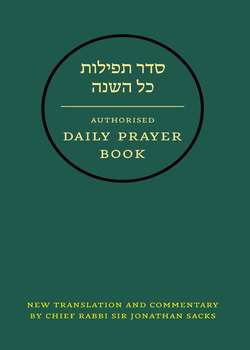Читать книгу Hebrew Daily Prayer Book - Jonathan Sacks - Страница 6
UNDERSTANDING JEWISH PRAYER 1. INTRODUCTION
ОглавлениеPRAYER IS THE LANGUAGE OF THE SOUL in conversation with GOD. It is the most intimate gesture of the religious life and the most transformative. The very fact that we can pray testifies to the deepest elements of Jewish faith: that the universe did not come into existence accidentally, nor are our lives destined to be bereft of meaning. The universe exists, and we exist, because someone – the One GOD, Author of all – brought us into existence with love. It is this belief more than any other that redeems life from solitude and fate from tragedy.
In prayer we speak to a presence vaster than the unfathomable universe, yet closer to us than we are to ourselves: the GOD beyond who is also the Voice within. Though language must fail when we try to describe a Being beyond all parameters of speech, language is all we have, and it is enough. For GOD who made the world with creative words, and who revealed His will through holy words, listens to our prayerful words. Language is the bridge joining us to Infinity.
Judah Halevi, the great eleventh-century poet, said that prayer is to the soul what food is to the body. Without prayer, something within us atrophies and dies. It is possible to have a life without prayer, just as it is possible to have a life without music, or love, or laughter, but it is a diminished thing, missing whole dimensions of experience. We need space within the soul to express our joy in being, our wonder at the universe, our hopes, our fears, our failures, our resolves, bringing our deepest thoughts as an offering to the One who listens, and listening, in turn, to the One who calls. Those who pray breathe a more expansive air: “In the prison of his days / Teach the free man how to praise.”
The Siddur is the choral symphony the covenantal people has sung to GOD across forty centuries from the days of the patriarchs until present day. In it we hear the voices of Israel’s prophets, priests and kings, its Sages and scholars, poets and philosophers, rationalists and mystics, singing in calibrated harmony. Its libretto weaves together texts from almost every part of the vast library of Jewish spirituality: Torah, the Prophets, the Writings, the classic compendia of the Oral Law – Mishnah, Midrash and Talmud – together with philosophical passages like Maimonides’ Thirteen Principles of Faith and extracts from the Zohar, the key text of Jewish mysticism.
There is space in Judaism for private meditation, personal plea. But when we pray publicly we do so as members of a people who have served, spoken to, and wrestled with GOD for longer, in more varied circumstances than any other in history. We use the words of the greatest of those who came before us to make our prayers articulate and to join them to the prayers of others throughout the world and throughout the centuries.
Almost every age and major Jewish community has added something of its own: new words, prayers, customs and melodies. There are many different liturgies: Ashkenazi, Sephardi, Oriental, Yemenite, Italian, those of Rabbi Isaac Luria and the Vilna Gaon and others, each with its own subdivisions. The particular liturgy associated with British and Commonwealth Jewry is, in origin, German-Polish, and is distinct in several ways from the prayer books of Eastern Europe. Each tradition has a character of its own, to which Jewish law applies the principle nahara nahara upashtei: “Every river has its own course'. Each of the historic traditions has its own integrity, its own channel through which words stream from earth to heaven.
This Introduction tells of how prayer came to take its present form, the distinct spiritual strands of which it is woven, the structures it has, and the path it takes in the journey of the spirit.
